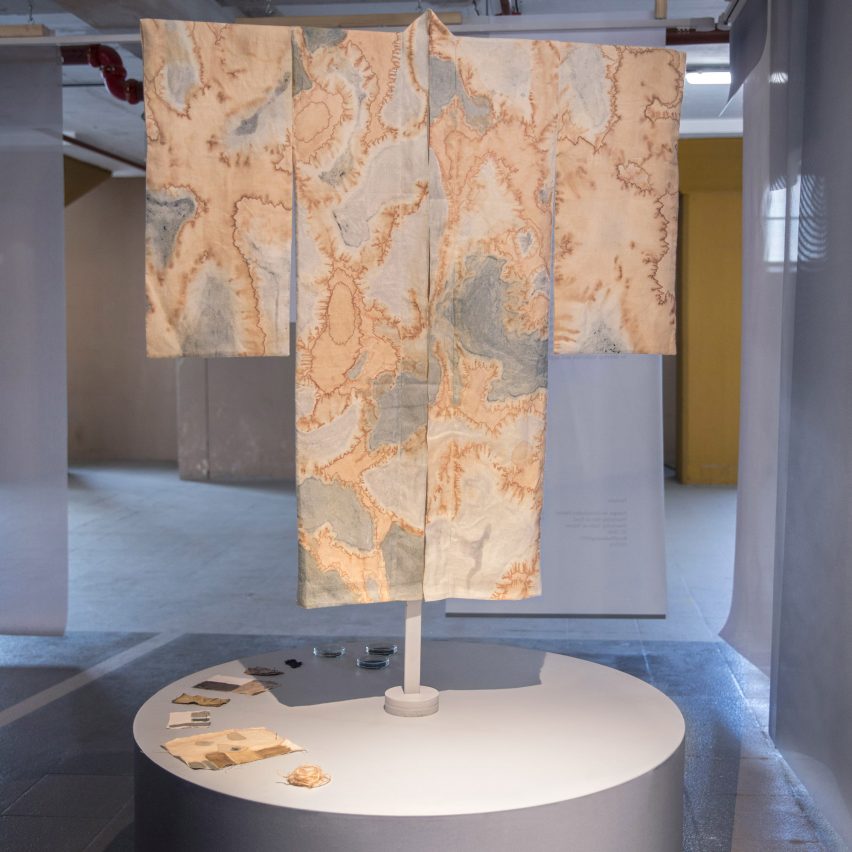Nienke Hoogvliet's Kaumera Kimono is dyed with wastewater

Dutch designer Nienke Hoogvliet used a byproduct from the wastewater treatment process to create the dyed pattern on this kimono, which is intended to be passed down through the generations.
The Kaumera Kimono was an outcome of an exploratory project undertaken by Studio Nienke Hoogvliet for the Dutch Water Authorities.
The government body has been examining ways to transform wastewater treatment plants into 'factories' capable of producing clean water, clean energy and valuable raw materials.
As a world leader in water management, the Netherlands is actively engaged in trying to understand and improve the water purification process.
One of the byproducts of this process is an alginate-like material with unique functional properties.
The raw material known as kaumera is recovered from wastewater during the Nereda purification process, which was developed by the Delft University of Technology.
The extracted sludge granules contain bacteria that form a biopolymer with the ability to bother repel water and retain it. The versatility of the material and its ability to change when combined with other substances led to it being named kaumera, which means 'chameleon' in Dutch.
To explore potential new uses for kaumera and other byproducts of wastewater treatment, the Dutch Water Authorities established the Energy and Raw Materials Factory.
This organisation invited Nienke Hoogvliet to curate an exhibition around kaumera for Dutch Design Week 2018, which included the kimono.
D...
| -------------------------------- |
| Olivia Lee designs furniture to help solve technology-related daily dilemmas |
|
|
Villa M by Pierattelli Architetture Modernizes 1950s Florence Estate
31-10-2024 07:22 - (
Architecture )
Kent Avenue Penthouse Merges Industrial and Minimalist Styles
31-10-2024 07:22 - (
Architecture )






